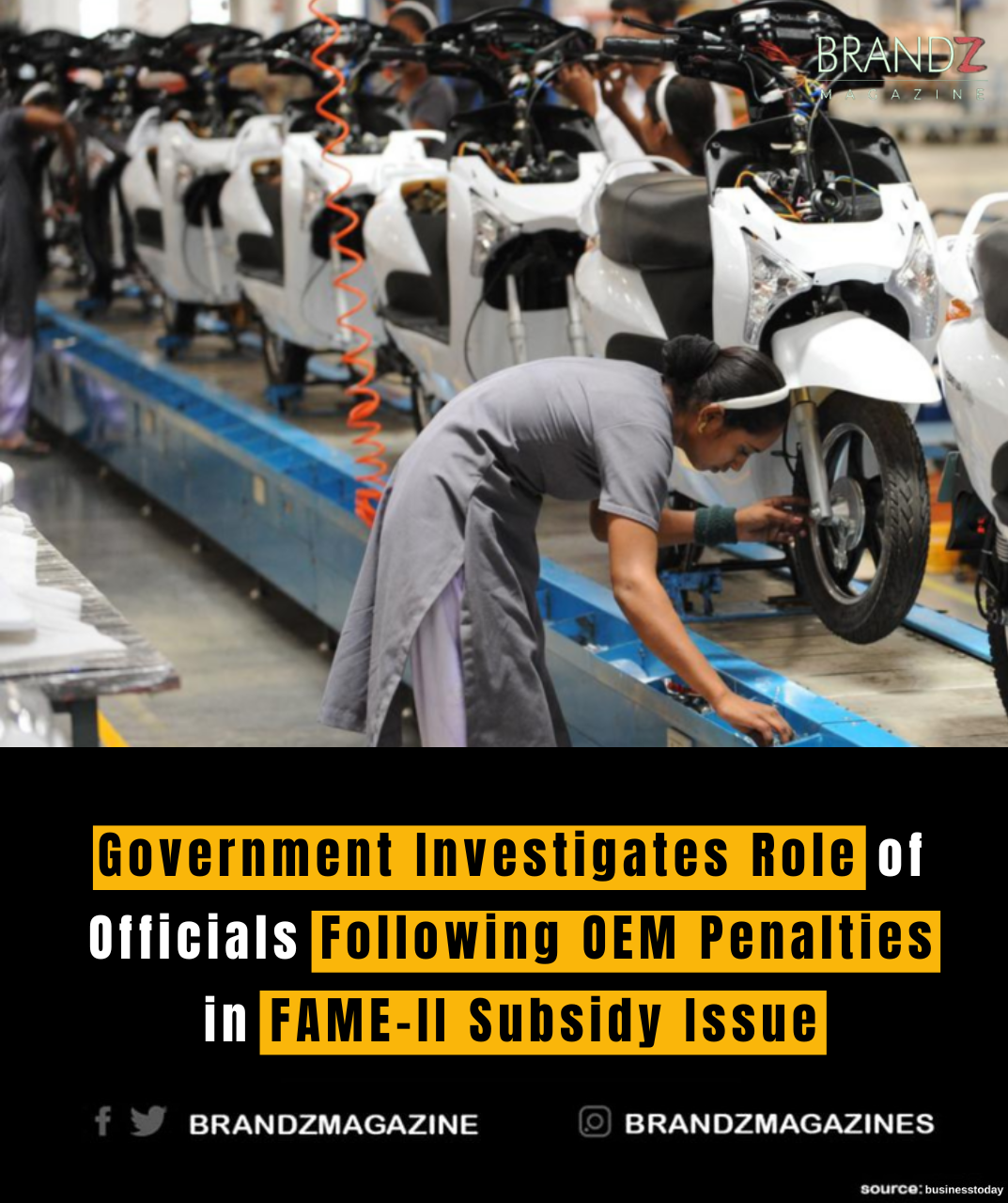
In the wake of penalizing Original Equipment Manufacturers (OEMs) under the Faster Adoption and Manufacturing of Hybrid and Electric Vehicles (FAME-II) scheme, the Indian government has initiated an investigation into the potential involvement of government officials in the subsidy issue. This move underscores the commitment to transparency and accountability in the implementation of key initiatives aimed at promoting electric mobility.
The FAME-II scheme, launched to accelerate the adoption of electric vehicles (EVs) and reduce vehicular emissions, provides incentives to OEMs producing electric and hybrid vehicles. However, recent penalties imposed on certain OEMs have raised questions about the implementation and oversight of the subsidy program.
The government’s decision to penalize OEMs was based on discrepancies identified during an audit of subsidy claims. Some OEMs were found to have misrepresented information, leading to an unjustified disbursement of subsidies. These penalties not only serve as a deterrent against malpractices but also highlight the need for a thorough examination of the entire subsidy disbursement process.
The ongoing investigation is now delving into the role of government officials in the FAME-II subsidy issue. It aims to determine whether any lapses or irregularities on the part of officials contributed to the misallocation of subsidies. This proactive approach underscores the government’s commitment to root out corruption and ensure the fair and efficient implementation of initiatives crucial to environmental sustainability.
The investigation will likely scrutinize various aspects of the subsidy disbursement process, including the verification of OEM claims, adherence to guidelines, and the overall supervision of the FAME-II scheme. If any official misconduct or negligence is uncovered, appropriate action will be taken to maintain the integrity of the subsidy program and to hold those responsible accountable.
Addressing issues related to the FAME-II subsidy is crucial not only for the success of the program but also for sustaining investor and public confidence in the government’s push for electric mobility. As the world transitions towards cleaner and more sustainable transportation options, maintaining the credibility of subsidy schemes becomes paramount.
Ensuring transparency and accountability in the investigation is equally important. The findings should be made public to provide clarity on the actions taken and to reinforce the government’s commitment to a fair and corruption-free subsidy disbursement process. Timely communication on the outcomes of the investigation will also help in dispelling any apprehensions within the industry and among potential investors.
Simultaneously, the government should use this opportunity to strengthen the existing framework for monitoring and oversight of subsidy programs. Implementing robust mechanisms for real-time verification, periodic audits, and continuous evaluation of the subsidy disbursement process can significantly reduce the likelihood of such issues arising in the future.
The FAME-II subsidy issue highlights the challenges associated with managing large-scale initiatives aimed at transforming industries. It serves as a reminder that continuous vigilance, stringent oversight, and swift corrective actions are essential to the success of programs designed to drive sustainable development.
In conclusion, the government’s investigation into the role of officials in the FAME-II subsidy issue reflects a commitment to upholding the integrity of initiatives promoting electric mobility. By addressing both the penalties imposed on OEMs and examining the conduct of government officials, the investigation seeks to ensure that subsidy programs are implemented transparently, fairly, and in line with the broader goals of environmental sustainability.

